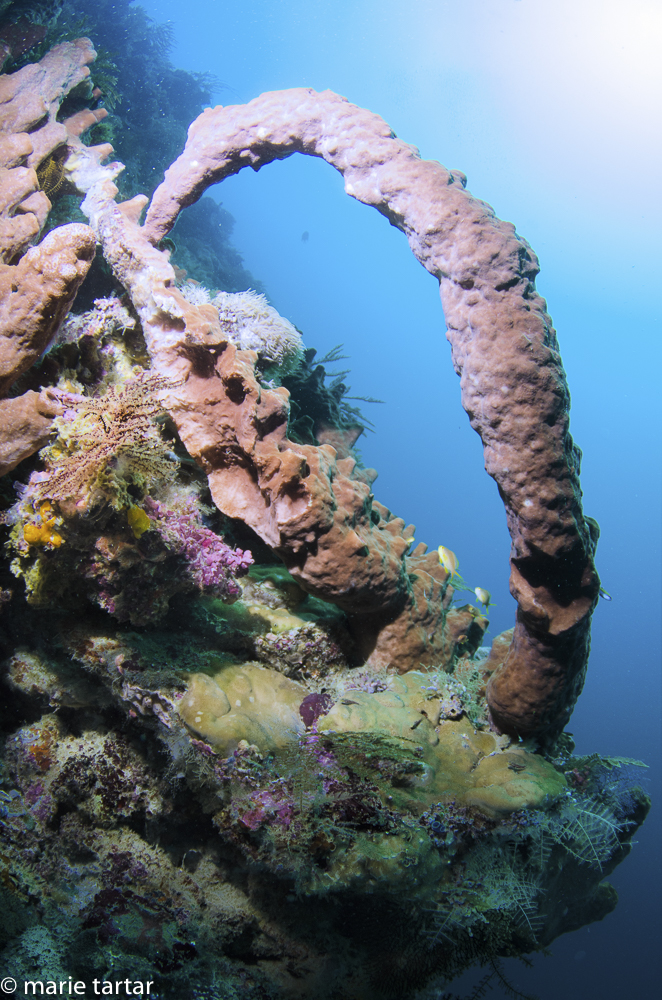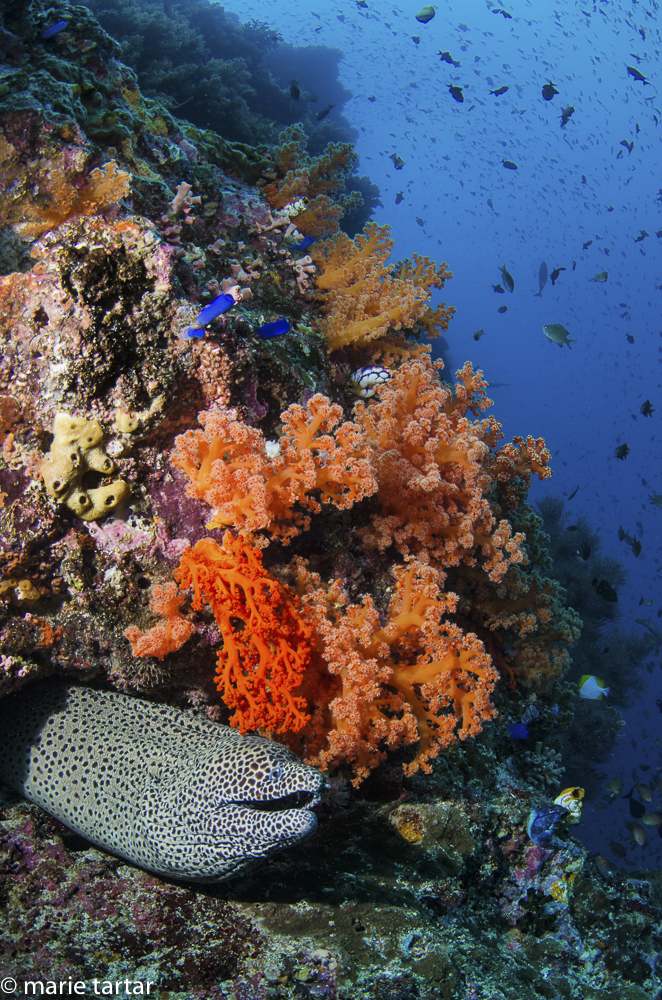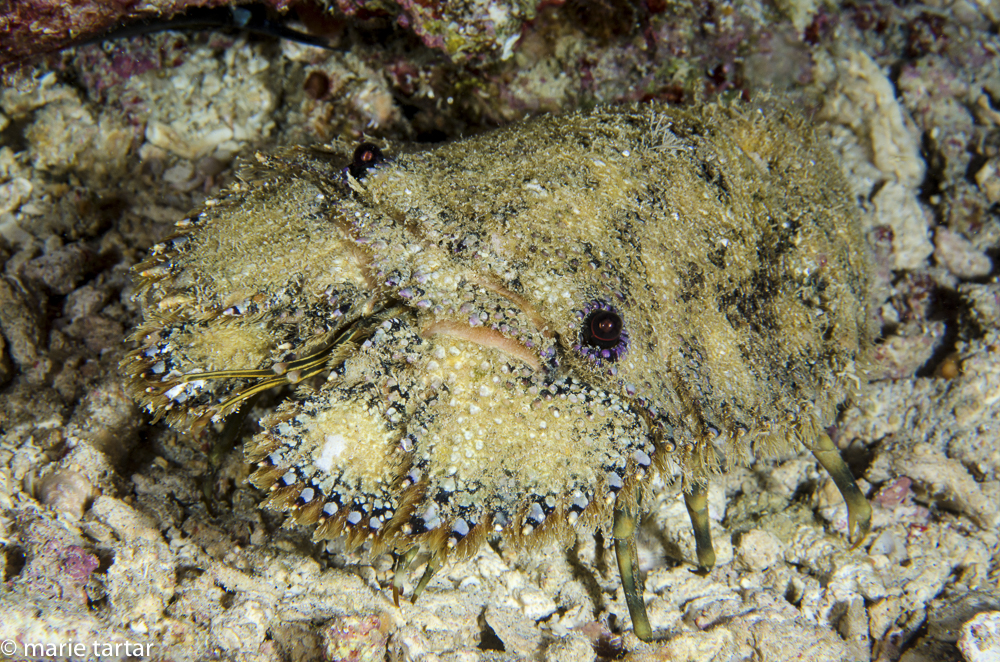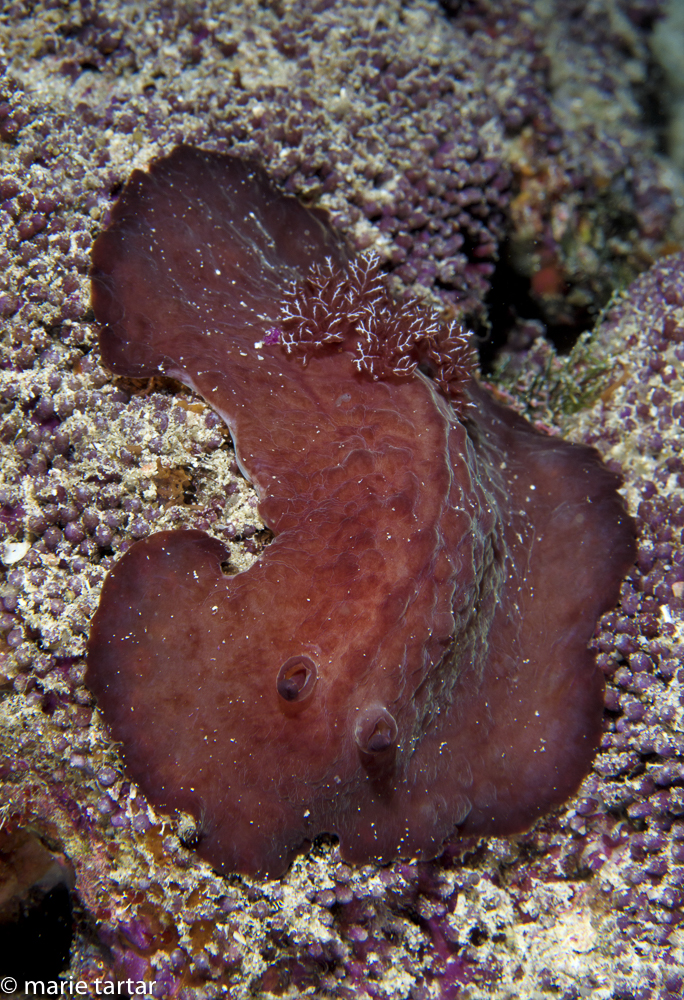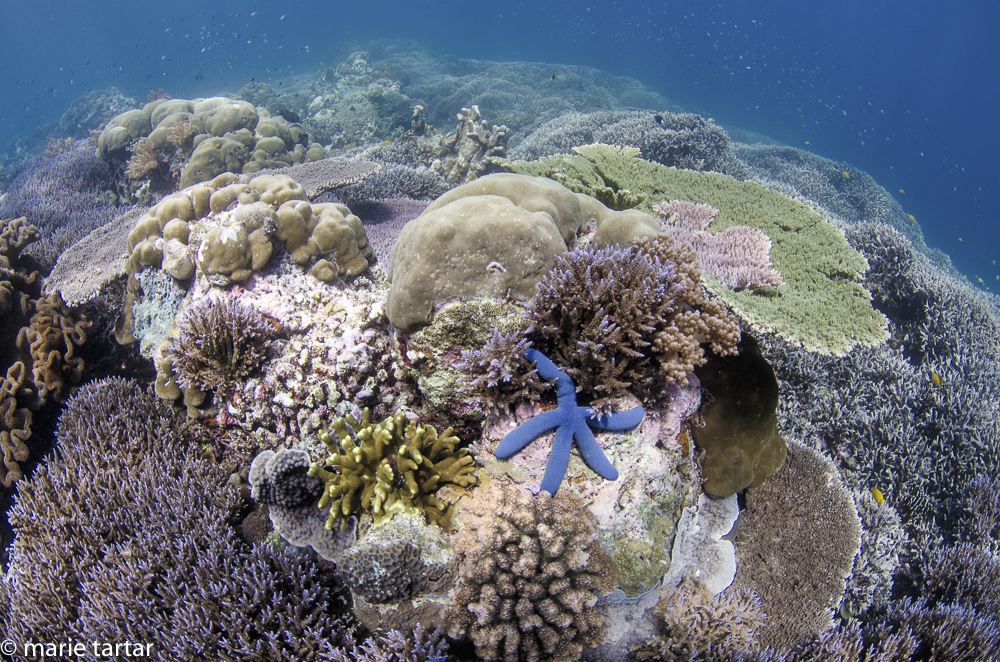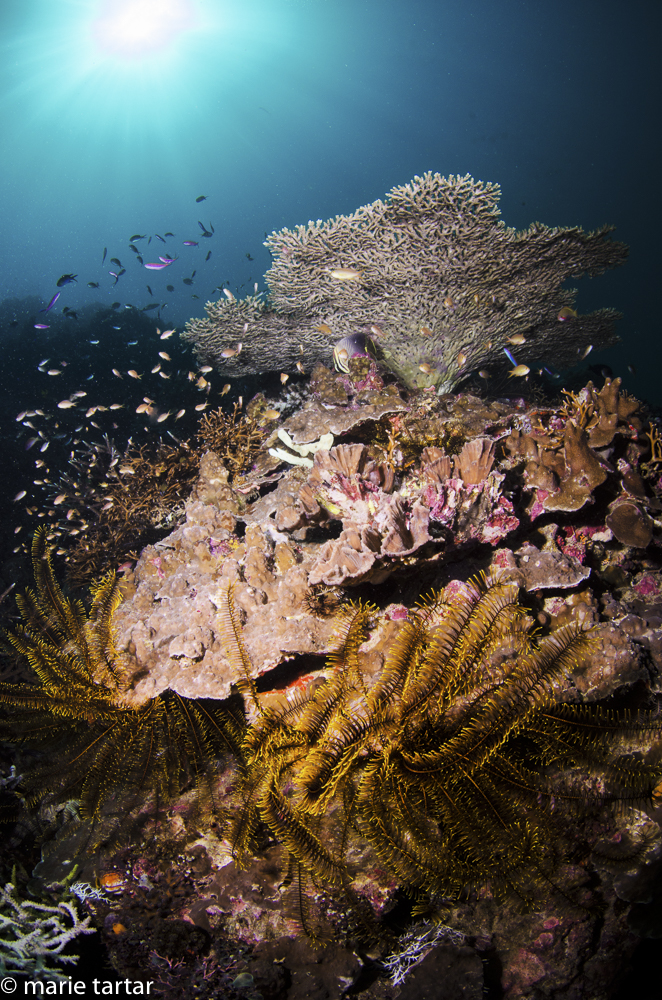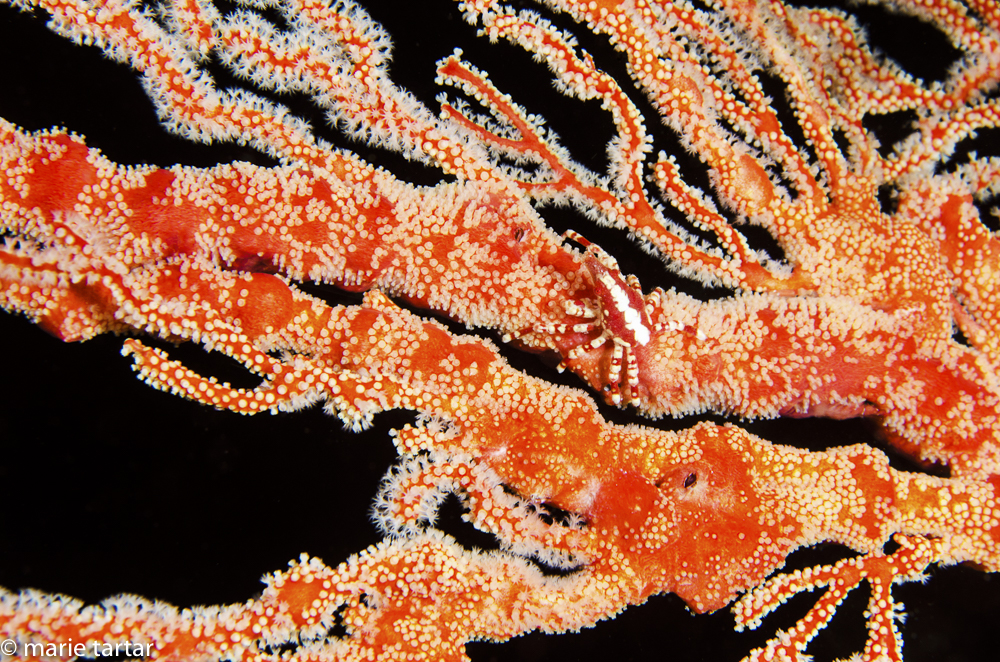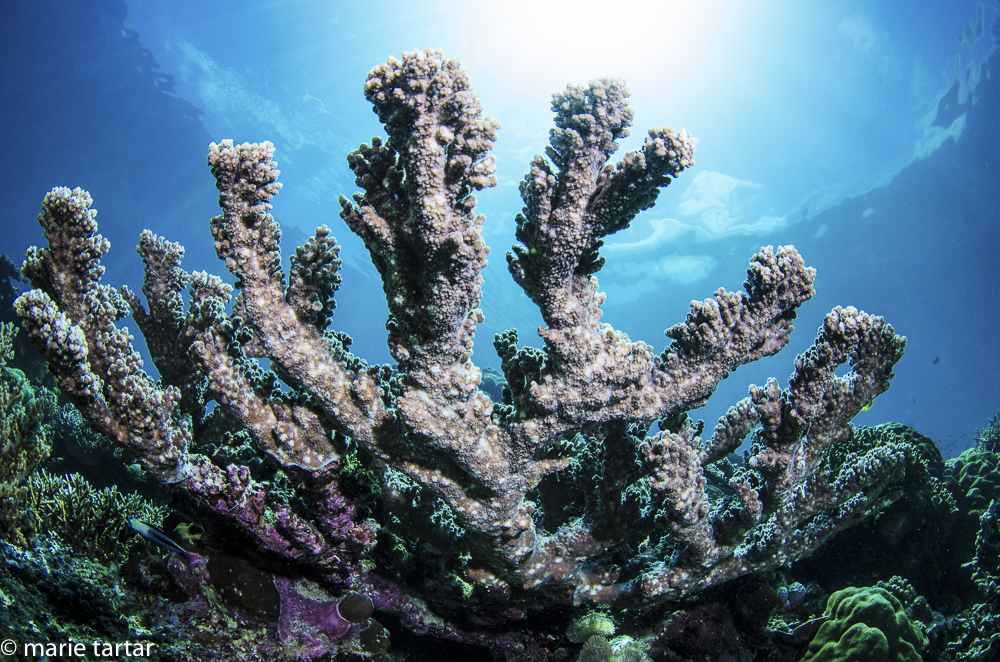
Part 4: Banda Sea
Saturday, November 7, 2015
Pulau Bui
Despite an exceptionally smooth crossing overnight, staying up late AND a gin and tonic nightcap (or perhaps because of), I didn’t sleep well. Our first dive site, Kai Seamount, was a relatively deep broad pinnacle, with the plateau top at 55 feet or so. The best sponge formations were on the slopes. I overcompensated on the backward roll in, doing a full flip, striking my head (lightly) on the skiff’s undersurface .
On surfacing, the ocean surface was smooth as glass. Ronan was paddle-boarding towards the moorings and the boats picking up the surfacing divers. Our instructions were to inflate a safety sausage if we surfaced alone, but it was so flat there was no need, as it was easy to see heads, moorings and skiffs in every direction. I had been wanting to try paddle-boarding, so yelled to Ronan to paddle over to let me try.
It was a work-out, especially in a full wetsuit. The only advantage of being fully suited up was exceptional surface buoyancy when I ended up flat on my face, when Steve disembarked. He had insisted on being taken for a ride, but was dead-weight and made the board hard to steer.
On the second dive, at The Fuse, a less deep pinnacle, I found my best wide-angle subject of the morning towards the end of the dive, in about 35 feet depth, one of the biggest giant Tridacna clams I have ever seen.
Lunch was left cooling when pilot whales were sighted, as well as a large pod of dolphins.
After lunch, we headed towards a beautiful wide sand beach backing our 3rd dive site (Dinding Baral, near Uran Island). As Adrian, our boat driver, swung my tank up onto the gunnel next to me, my custom dental molded mouthpiece flew off and into the water. We didn’t immediately see it, so Greg jumped into the water on SCUBA to look for it. Steve repeating: “It should float,” prompted me to lean WAY over the gunnel, bobbing for apples-style, to have another look and saw it floating, receding away. Steve jumped into water suited up for a successful rescue. My regulator, coming apart in bits and pieces through the trip, seemed to be signalling “Service me!”
The site itself featured huge, sculptural sponges, and hard corals in the shallows, a veritable botanical garden under water.
Our late afternoon into dusk dive was an exploratory dive to a site no one on the boat had ever dove (Tioor Island). Although Burt was unimpressed enough to begin surfacing after 20 minutes, our group of Markus, Steve, Greg, and Eric, augmented by Doug and Phil, found a lot to like.
The site was a sloping sand and coral patch array, with a mini-wall in the shallows. As soon as I descended, I saw to my horror that someone (not me) had turned my camera off and it was not turning back on. This glitch was occurring with enough frequency that I had taken to leaving it on.
Of course, without a camera, I immediately found a large eel, and then a sizable rust and maroon colored scorpionfish, nicely tucked into a semi-circle of coral.
Then, to my amazement, streams of black and white striped convict blennies, began pouring out of every nook and cranny of a large coral bommie. They ebbed and flowed, then began forming a column extending toward the surface. Greg was shooting them, and they outlined him. I wasn’t sure Steve had seen them, as every time I looked, he seemed to have his head deep in the reef, as macro shooters are wont to do. I swam over to get his attention. He returned with me, but didn’t seem inclined to shoot them, so I motioned to him to exchange cameras so I could try with the 105 mm macro set-up.
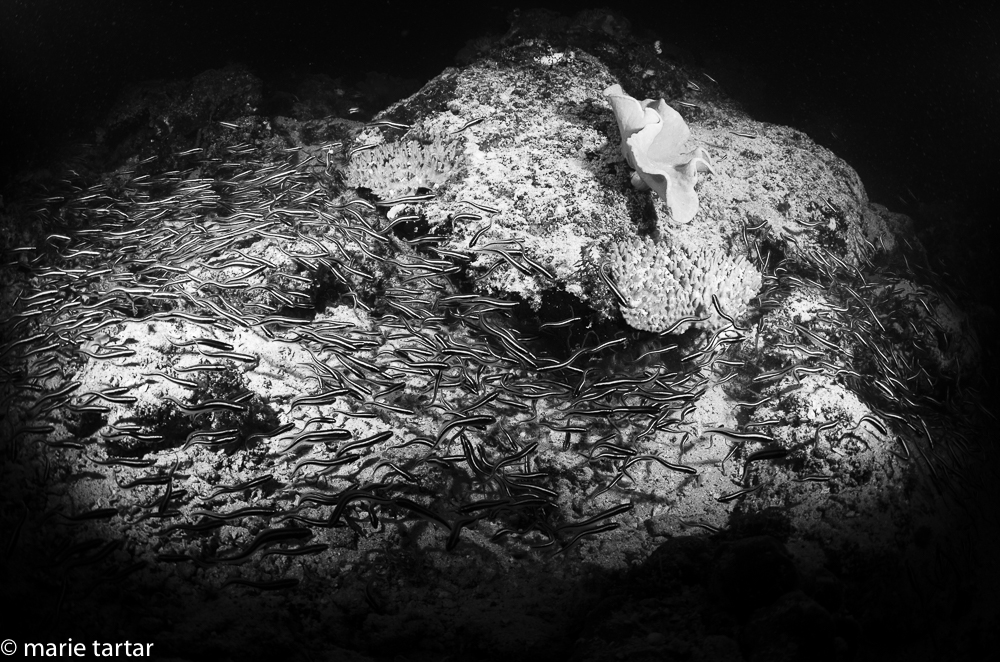
Feeding juvenile convict blennies pour over a reef at dusk in Indonesia’s Banda Sea. They feed on plankton, but return to their burrows at night, where they reportedly dangle by their mouths from the roof by mucus strings!
While occupied with this, somehow he got my camera going again, so we changed back. By now, it had grown nearly dark.
Sunday, November 8, 2015
Our 2 morning dives at Hatta Island (Karang Hatta, then Dinding Hatta) were highlighted by a hammerhead shark which swooped in from the blue to have a look at us; I also saw a turtle in the blue but elected not to give chase.
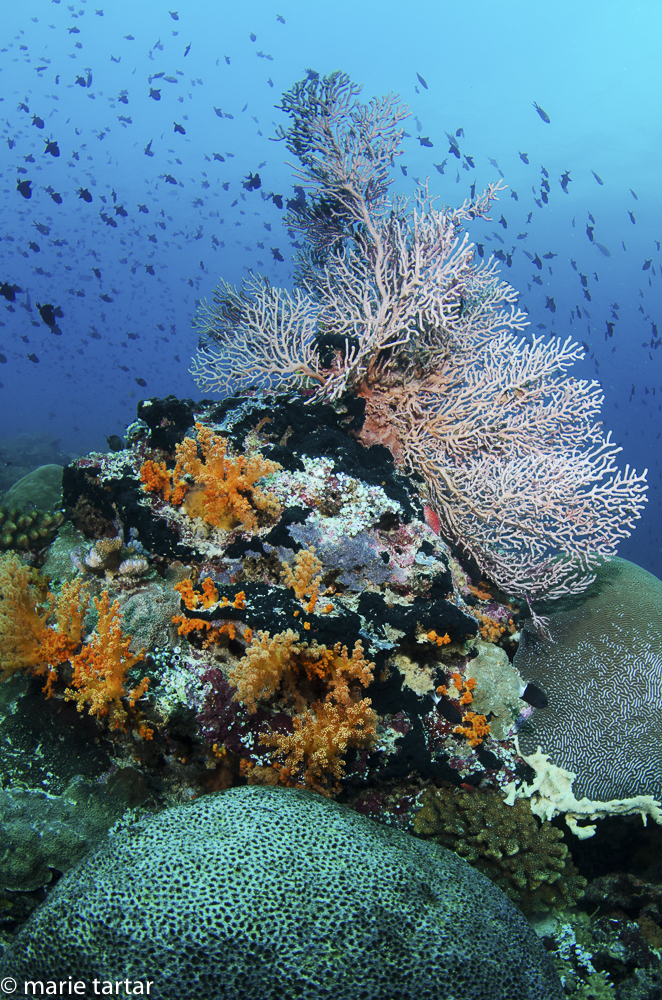
Some Banda Sea dive sites have a high concentration of triggerfish, leading to speculation this may signify an ecological imbalance
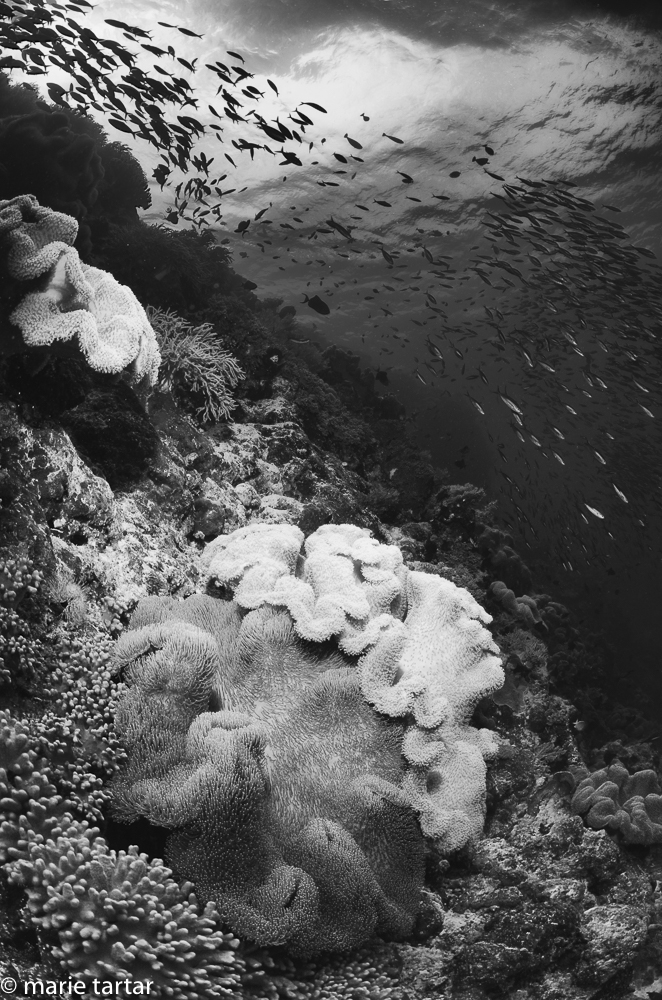
Indonesian Banda Sea reef scene, with slope studded with mushroom leather corals (Sarcophyton sp.) and cascades of fish schools in the water column
The second dive ended with a large swim-through, offset with schools of batfish and fusiliers. “Stalagtites” of soft coral flowed down from the ceiling of an alcove.
Our 3rd dive was with Lea and Kerri to Pisang Island, Batn Rapal. Our group went to the small underwater pinnacle, with the water filled with thick clouds of red-toothed triggerfish and pinnate butterfly fish. Huge barrel sponges studded the mount, with fields of orange tubastra. Large black-spotted moray eels and small white-eyed eels shared homes.
The strong current at the top made it difficult to shoot a large cluster of barrel sponges I had spotted on the way down. No parameters adjustments being possible with one hand occupied by hanging on, I could only wait until Klein’s butterflyfish (Chaetodon kleinii) swam into the field.
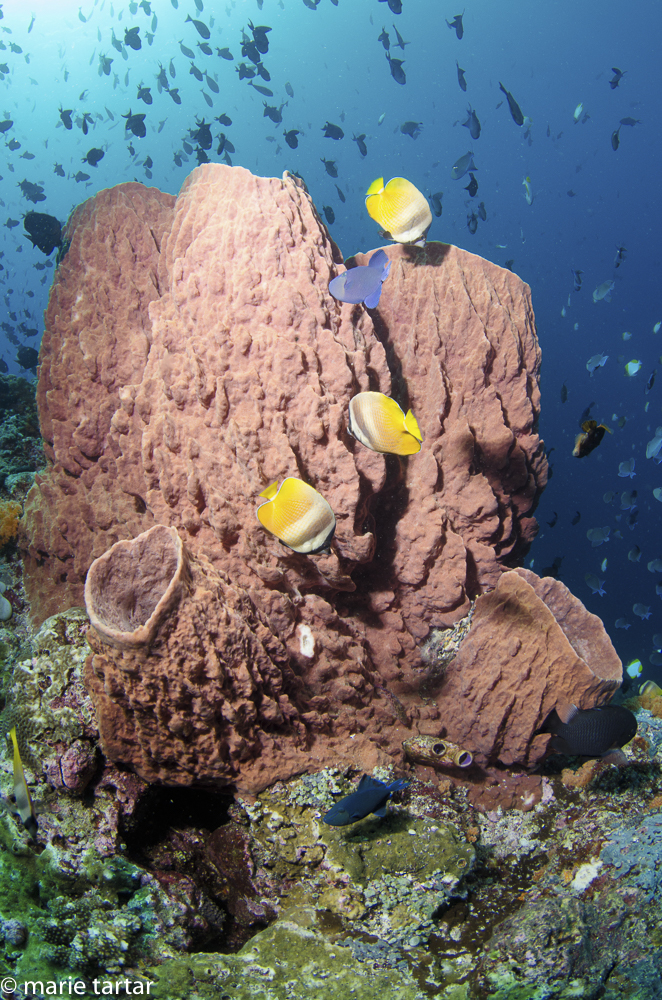
I saw this beautiful cluster of barrel sponges on the way down and made a note of its depth, to shoot it on our return. By that time, the current was intense enough all I could do was hang on with one hand, and wish I could freely swim and work this subject
During our night dive, Banda Besar (Tempat Lego), with Lea, Greg, Markus, and Steve, Lea found a slipper lobster on entry.
Eels were everywhere. I ran into Eric, Cameron and Phil at the end of dive, when Eric had just found a huge Spanish Dancer.

Spanish dancer (Hexabranchus sanguineus) on night dive; I still have yet to see one really dance through the water column as they reportedly are wont to do!
In the breaks between dives, Greg, Steve and I watched a French version of “The French Connection,” called “The Connection,” a slick remake of the Gene Hackman classic about mob control of the drug trade in Marseilles.
Monday, November 9, 2015
Our search for reported schooling hammerheads on Amet Reef near Nusa Lant was unsuccessful. But the sandy slope, dotted with coral islands, yielded candelabra-like stands of sponges and corals, as well as the most massive barrel sponge I’ve ever seen. Lea pointed out a spotted eagle ray, resting under a table coral, an interesting challenge to photograph in a confined space.
In the shallows was a gorgeous hard coral garden, over which schools of tiny fish danced in the sunlight.
Our second dive was a wall dive, studded with hard corals, even more confluent in the shallows.
I practiced the techniques required to include the sunball in the shot (f14-16-18, shutter speed 1/250, strobes near full power).
Steve and I inadvertently missed the afternoon, 3rd dive, sleeping right through it. I guess we needed the sleep, as we neither heard the Swiss cowbell which is rung to herald activities and mealtimes, nor Greg’s knock at our door. It should be noted that he did not use the Gestapo knock technique. The bell is upstairs in the camera room, and is so loud that it is hearing damaging. Anyone in earshot is warned:
“Fire in the hole!”
I headed upstairs at what proved to be 4 pm, with the 3rd dive nearly over. Most people shot macro, and Ronan found the first frogfish of the trip, a tiny black specimen in the deep.
The night dive was spent largely on 2 adjacent large bommies, which provided plenty of subjects, including soft coral crabs, mating nudibranchs, and a lovely pale leaf scorpionfish (Taenianotus triacanthus).

Mating Nembrotha kubaryana nudibranchs; nudibranchs being hermaphrodites (having organs of both sexes in the same individual), mating involves transfer of sperm to its partner, before separating & each producing a fertilized mass of eggs

Leaf scorpionfish (Taenianotus triacanthus) is paper thin, and mimics leaves swaying back and forth in the surge, an excellent camouflage
This was a good warm-up for the final stop on our circuit, Ambon, increasingly widely known as a critter capital of Indonesia, with muck diving to rival Lembeh.
-Marie
Coming soon! Last, but definitely not least, Indonesia installment: Ambon


